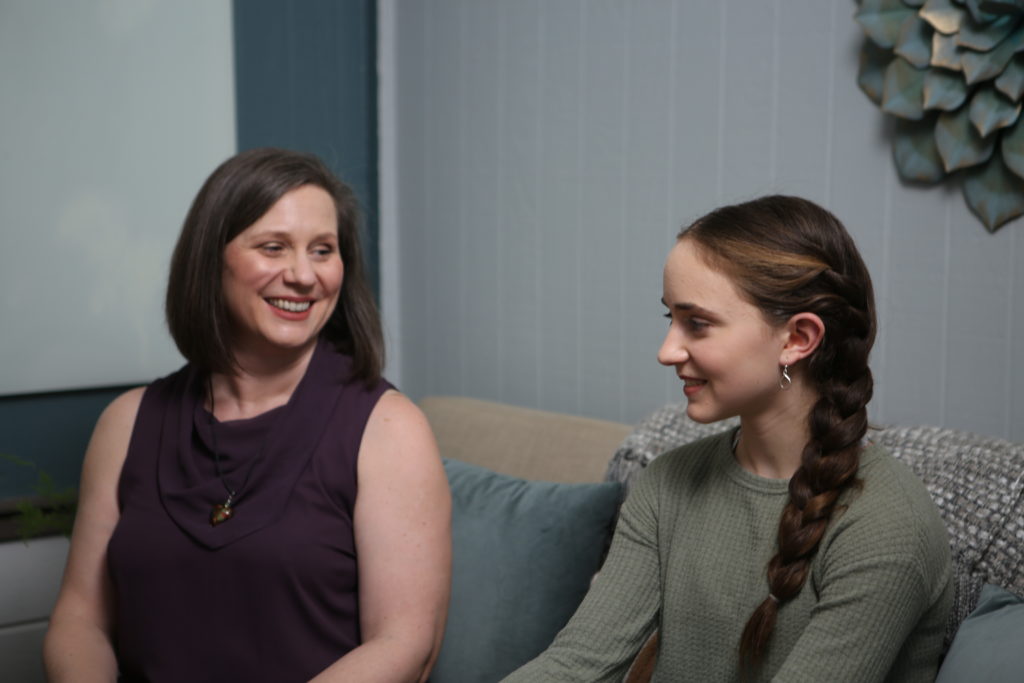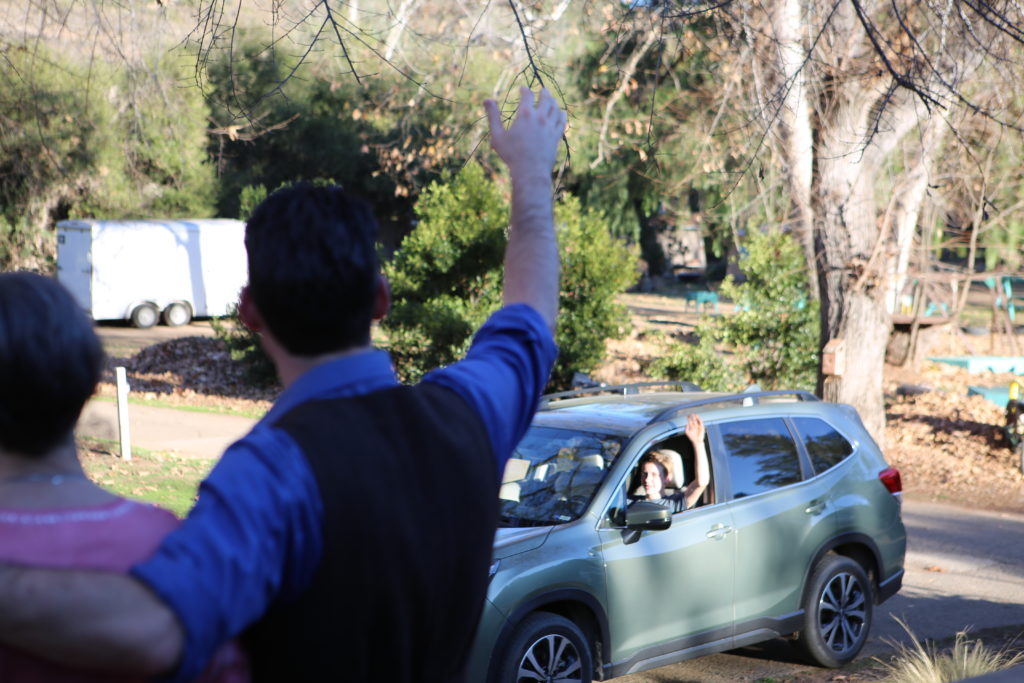The Resilient Family Part 3: Fortifying Your Heart and Relationships
In Part 1 and 2 of the Resilient Family Blog series, we went deep into physical and mental health. In many ways these areas are personal, internal and focused on the individual.
However, when it comes to our relationships, community, and our connection to the social nervous system, the responsibility becomes shared. How we connect, communicate and share space widens our impact. In a perfect world, we would be compassionate, caring and hold firm but loving boundaries with those we engage with. Yet, we are human, many living through less-than-ideal experiences, and our animal selves resort to strategies of self-preservation that help keep us safe, but may disrupt our ability to connect with others in a meaningful way. Blame and shame come to mind as a primary defense, but this strategy can create distance rather than closeness. And we have also learned, over the last year, just how important our support network is. Being alone through difficult times only creates more pain and suffering. JAMA reported in September that depression had tripled since the start of the pandemic.
Stress, anxiety and depression are all on the rise, but we know that community and connection are the salve. We must make those connections a priority to be fortified and resilient.

I learned from a very wise therapist, Dr. Jonathon, this idea of both “vertical’’ and “horizontal’’ responsibility in relating to others. Imagine a plus sign, with a vertical and a horizontal line intersecting in the middle. The vertical line represents our “self’’, moving up and down toward our connection to spirit. Regardless whether you’re a religious or spiritual person, I consider a connection to a higher power the same as a higher self … a self that sees the world and makes decisions from our deepest knowing, not emotion, fear or pain. The horizontal line represents our connection and relationship to the other people in our lives.
When we are doing our work to fortify our connections and our heart, what this symbolism represents is the importance of doing the work of healing our individual self AND doing the work to heal our connections and relations with those around us. We want the plus sign to be balanced, with equal energy toward personal and collective responsibility in our words and deeds.
Consider all of the relationships you have outside of yourself:
- Biological and possibly adopted family
- Spouses/partners
- Children
- Friends
- Work colleagues
- Community members
You can imagine concentric circles of closeness with each of these rings of connection. Some are closer in intimacy and relating, others closer in proximity. And yet we relate to each of them based on some fundamental experiences in our lives. In The Resilient Family Part 2, I introduced this idea of the Social Nervous System. We once understood that there were two levels of our nervous system, the sympathetic (active, responsive, fight, flight) and the parasympathetic (rest, digest, freeze). There is a third that Dr. Stephen Porges identifies in the Polyvagal Theory called the Social Nervous System. It impacts our mood, immune response, digestion, heart functioning and blood pressure. Most importantly, this communication between body and brain affects our sense of safety and connection, and informs our sense of love and belonging.
If we’ve had challenging or traumatic experiences but have not been able to process or reconcile, this will impact our ability to experience a sense of safety, love and belonging. The challenging part is that many don’t realize they are experiencing the aftermath of trauma, or are too ashamed to share, which impacts our relationships and ability to establish healthy connections.
Our Social Nervous System allows us to find ways of coherence, or regulation in our physiological state, as well as co-regulation, which is the action or emotional state of one person syncing with the action or emotional state of another. A great example is in parents and infants. When a baby is crying and upset, the parent may pick her up, hold her to their chest, rock her and make gentle sounds. You may see the visible calming of the child, her crying stops, their breathing and body relax. If the parent is relaxed, their state informs the baby that it is safe, their needs are being attended to, they are loved and cared for. Now, if that same parent picks up the baby, shushes loudly, bounces them vigorously, puts them back in the crib and walks away. I imagine the baby’s state would escalate into a frenzy, becoming inconsolable and possibly agitating the parent even further, which could then lead to more seriously harmful behavior. Any sleep-deprived new parent can attest to this feeling of dysregulation at some point in those first few years. The same thing happens as adults when we respond to the energy or state of another person.

Vertical Connection:
In order for us to find co-regulation and maintain healthy connections with others, we must first find our way in our vertical connection to ourself and spirit. Coherence and self-regulation are the result of understanding our own needs, cultivating healthy response patterns in times of stress and expressing our needs in productive ways.
Common patterns for coping with dysregulation are often to distract, numb out and avoid. Addictions, including escape through television or the internet,shopping, procrastination, chronic fighting with loved ones and chronic illness, are ways of coping with dysregulation. We are not bad humans for engaging in, or experiencing, these strategies, we have just learned over time that they work to help us cope. They may not work for the overall functioning of our life and relationships, but they help us make it through the day.
Self-regulation and coherence also go a long way in releasing the blame game from our vocabulary. In dysregulated states it’s easy to be defensive, reactive or feel like the world is against you. For the same reason we don’t try to teach a child a new behavior in the middle of their tantrum. Even as adults, we can’t always see a situation clearly, learn a new skill or respond effectively, when we are in a heightened agitated state.
If it’s time to add new coping mechanisms to your tool bag, here are a few ways to get started:
- Assess: What are your current strategies for self-regulation? Do they support your overall functioning and healthy connections, or are they distracting, losing effectiveness and having a negative effect?
- Get Support: Whatever you’re dealing with, you are not alone. And hiding or feeling shame for it will only drive it deeper. Finding a class, support group, therapist or other healing practitioner can help us see the forest for the trees, provide new strategies and practice new skills.
- Develop routines and practices that reinforce the behavior change being sought. In The Resilient Family Course we learn strategies for creating lasting behavior change by identifying not only the behaviors but the triggers and the underlying needs.
Some helpful practices for establishing healthy vertical responsibility:
- Using technology to learn self-regulation through heart-rate variability like HeartMath.
- Breathing is more than just getting oxygen into our body; our breath is one of our primary nervous system regulators. Taking time to breathe intentionally and learn specific strategies for upregulating and downregulating the nervous system is helpful. Our Breath Collective is an easy-to-access community to practice on your own.
- Somatic Experiencing is a powerful therapy that focuses on identifying and releasing trauma from our body and helps us to learn tools for self-regulation.
- Meditation is a way to quiet the mind, use our breath and center ourselves.
- Movement. Yoga and dance are often used in trauma treatment to connect to the body and move energy.
- Music and Singing. Vocalizing, humming and singing are all ways to create resonance in ourself and with others.

Horizontal Responsibility:
When we begin to take personal responsibility for our own regulation and coherence, it makes our relationships that much easier. Horizontal responsibility is the agreement we make with another person to be in a relationship and how we hold ourselves accountable for the health of our connection. To make relationships work, it takes effort, nurturing and commitment. How often do you talk ABOUT your relationship with someone you love? Remember, resilience does not mean we will never have a disagreement or discomfort in our relationship, but rather, we have the capacity to repair and recover when a boundary is crossed, our feelings are hurt or an agreement becomes unclear.
Here are a few things to consider as you explore the resilience of your relationships:
- What are the roles in the relationship?
- What are the responsibilities you have with each other?
- What spoken and unspoken agreements do you have?
- Has there been a change or transition for either that is impacting you or your partner?
The work I do with teens and their families illuminates these questions clearly. Consider the developmental stage of a 16 year old who has just earned their driver’s license. They are in the middle of their adolescent development, their executive functioning still developing, impulsiveness is typical and yet they are given the opportunity to operate a motor vehicle on their own. The roles between the parent and teen are changing, one releasing control and the other being given more control over their movement and freedom. The parent still has responsibilities to guide and protect, and the teen has more responsibilities to think about safety and others. This is a transition that requires communication, agreements and follow through. The parent and teen will continually negotiate boundaries and the relationship between them. And these agreements will likely be tested frequently (on both sides) and re-negotiated entering uncharted territory.
Relationships are a dance, sometimes we are in sync, and other times we step on each others toes. As humans we are dynamic individuals and our relationships are even more dynamic. If we respect the fluid nature of relationships, we are less likely to get mired in expectations that want to keep the status quo.
Here are a few strategies to consider for building horizontal responsibility:
- Identify the values and virtues that are important to you. As a family, identify what your shared values are.
- Learn “Conscious Communication’’ strategies like Non-Violent Communication to learn how to listen and communicate your needs and desires in productive ways.
- Obtain support from a professional individually and/or with the other person you are in a relationship to obtain perspective and support in practicing communication.
- Find mutual ground and ways to connect that are enjoyable, playful and fun.
Humans are social beings and wired to feel a sense of safety through belonging and connection. Maintaining a healthy sense of self and connection to others is vital to our capacity for resilience. If you want to learn more about how to create that in your relationships, register for The Resilient Family self-study course, join Our Resilient Community, or call for a discovery call with me.
You are not alone.

